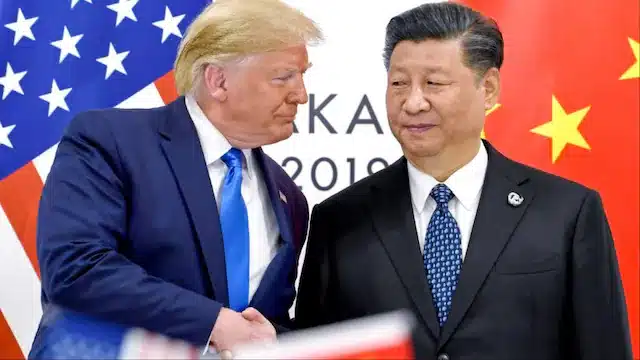US Secures Trade Deal Amid Donald Trump’s Tariff Wars

US President Donald Trump’s recent trade policies are reshaping global trade dynamics, particularly concerning China. As the deadline for a temporary tariff suspension approaches on July 9, US officials are actively negotiating with key trading partners in Asia and Europe. These discussions aim to establish agreements that could limit Chinese involvement in global supply chains, despite a recent truce between the two economic giants. Countries like Vietnam, Thailand, and South Korea are already taking steps to align with US interests, highlighting the growing tension in international trade relations.
New Tariff Structure with Vietnam
In a significant move, President Trump announced a new tariff structure with Vietnam, which could have far-reaching implications for Chinese exports. Under this arrangement, Vietnamese goods exported to the US will incur a 20% tariff. Furthermore, products identified as being transshipped through Vietnam will face a hefty 40% tariff. This strategy targets goods that contain Chinese components, whether they are minimally processed in Vietnam or merely routed through the country. The specifics of this agreement remain largely undisclosed, and its potential impact on China’s exports to Vietnam is still uncertain. China’s Ministry of Commerce has yet to respond to inquiries regarding this development.
Meanwhile, India is also in discussions to finalize a trade deal with the US. The negotiations focus on “rules of origin” requirements, with the US seeking a minimum of 60% local value addition for products to qualify as “Made in India.” Reports suggest that India is attempting to negotiate this requirement down to around 35%. This ongoing dialogue reflects the broader trend of countries reassessing their trade relationships in light of US tariffs and the need to navigate the complexities of global supply chains.
Challenges for Asian Economies
The current trade landscape presents a dilemma for many Asian economies, which find themselves caught between the need for access to US consumer markets and their reliance on Chinese manufacturing inputs. Alicia Garcia Herrero, the Asia-Pacific chief economist at Natixis SA, emphasizes that countries like Vietnam, Cambodia, and Taiwan are particularly vulnerable to this dual dependency. While the US market is crucial, China remains a significant trading partner for most Asian nations.
In response to the evolving trade environment, China has issued stern warnings to its trading partners. Foreign Minister Wang Yi is expected to address these concerns during an upcoming diplomatic mission to Europe. The Chinese government has firmly opposed any agreements that compromise its interests in favor of tariff reductions. This stance underscores Beijing’s commitment to safeguarding its economic position amid increasing pressure from US trade policies.
Global Trade Dynamics and China’s Response
The potential for the US to influence other nations in implementing export restrictions on advanced technology poses a significant challenge for China. Recently, Taiwan expanded its list of restricted entities to include major Chinese firms, requiring local companies to obtain government clearance for transactions involving these businesses. This situation highlights the broader implications of US-China trade tensions, which extend beyond Asia and into Europe.
European relations with China are also becoming strained. The European Commission has criticized Beijing’s approach to rare earths and magnets, raising concerns about China’s industrial surplus. The EU’s potential agreement with the US has further alarmed China, particularly regarding provisions that could mirror those in the British-American deal, which includes supply chain security and export regulations. Beijing views these developments as a direct challenge to its economic interests, prompting a public critique of the agreement.
China’s Strategic Concerns
China’s primary concern lies in the potential consolidation of US-led initiatives that could reshape global commerce, marginalizing its role in international trade. President Xi Jinping has called for regional unity in response to these challenges, urging Asian nations to avoid commercial fragmentation. Historically, China has countered opposition through selective trade restrictions, as seen in its responses to tariffs imposed by the EU and other countries.
As the July 9 deadline approaches, the US plans to implement a 50% tariff on nearly all European products if agreements are not reached. This situation places significant pressure on the EU, which values its relationship with the US, given that European exports to America far exceed those to China. The ongoing negotiations and trade dynamics will likely continue to evolve, shaping the future of global trade and the balance of power between the US and China.
Observer Voice is the one stop site for National, International news, Sports, Editor’s Choice, Art/culture contents, Quotes and much more. We also cover historical contents. Historical contents includes World History, Indian History, and what happened today. The website also covers Entertainment across the India and World.
Follow Us on Twitter, Instagram, Facebook, & LinkedIn

